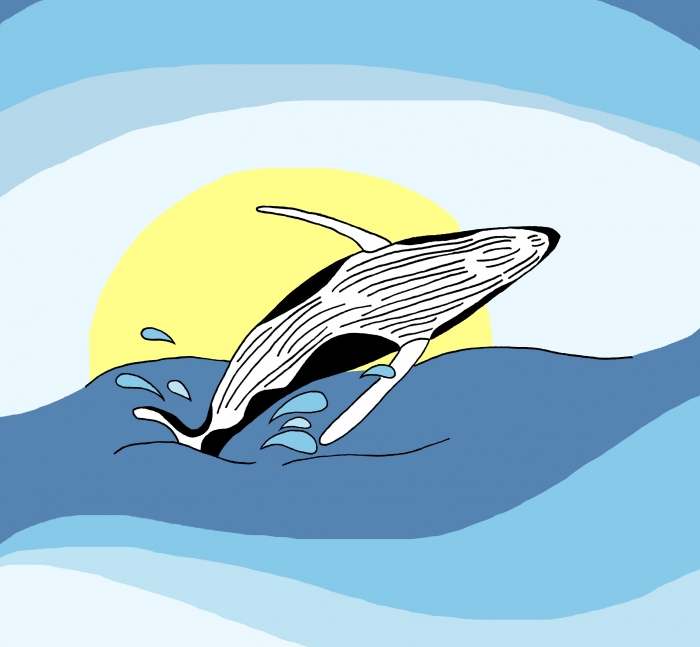Marine biology fans celebrated World Whale Day on Feb. 18, commemorating the curious creatures and raising awareness for their protection. Whales play a vital role in the oceans’ functioning and carbon storage. Unfortunately, these mighty ecosystem engineers are threatened by whaling, habitat loss, and pollution.
Canada’s coastlines are home to more than 30 species of whales, from the scarce North Atlantic right whale to the gnarly narwhal. In belated celebration of World Whale Day, here are five of the more iconic species that inhabit Canadian waters.
Blue whale
The largest animal alive, the blue whale can grow up to 30 metres long and weigh over 150 tons. Its tongue alone is roughly the weight of an elephant, and its heart is the size of a small car. Blue whales are baleen whales, cetaceans that have keratin plates instead of teeth to capture prey via filter feeding. Consuming up to 40 million krill per day, these animals are found in every ocean on Earth and migrate thousands of miles each year.
An estimated 95 to 99 per cent of the blue whale population was lost to whaling between the 17th and 20th centuries. The International Union for the Conservation of Nature (IUCN) currently lists the blue whale as endangered. However, its global population is slowly recovering, currently estimated to fall between 10,000 and 25,000 individuals.
Humpback whale
Another iconic baleen whale, the humpback is famous for its song. Since humpbacks don’t have vocal cords, the low noises that they make are produced by pushing air out of their blowhole. While researchers are unclear on why they make these sounds, they appear to be involved in mating rituals. Humpbacks can also propel their entire bodies out of the water, or breach, a behaviour that is associated with communication, territoriality, playfulness, and even the removal of parasites.
Also notable is their unique mode of feeding. Humpbacks herd their prey by blowing bubbles around them and capture fish by making loud vocal sounds and slapping their fins against the water to drive them to the surface and immobilize them.
Sperm whale
With its block-shaped head, the sperm whale has the largest brain of any animal and is the deepest-diving marine mammal in the world. A toothed whale, it hunts in pitch-black waters, relying on echolocation to capture its prey, which includes octopus, various fish, and even giant squid. The sperm whale’s name comes from the spermaceti organ in its large head, which produces a white waxy substance that was originally mistaken for sperm but is actually used for buoyancy and echolocation.
Beluga whale
A close relative of the narwhal, the beluga whale undergoes a Gandalf-like transformation throughout its life: Born a dark gray color, it later turns white.
Though the beluga is toothed, it swallows its prey whole. Also known as the “sea canary,” it’s highly vocal and can live in pods of up to 100 whales.
Belugas are relatively small and have a thick layer of blubber to keep them warm in freezing Arctic waters. Unfortunately, they are particularly susceptible to the effects of pollution. The contaminant levels in the bodies of St. Lawrence belugas were once so high that the carcasses were considered to be hazardous toxic waste. They remain one of the most contaminated marine mammals.
Orca
The orca, or killer whale, is not actually a whale, but a dolphin. Nevertheless, it deserves recognition on this list.
This distinct black and white whale is an apex predator, meaning that it has no known threats in the animal kingdom. With an extremely powerful jaw, it feeds on a variety of prey such as fish, squid, seals, birds, whales, and sharks. Reptiles, polar bears, and moose have even been found in the stomach of orcas.
Orcas are extremely intelligent with complex social structures that have been compared to the cultures of humans and elephants. Though ferocious hunters, they do not pose a threat to humans. While the reasons behind their lack of appetite for humans are not entirely known, some theories suggest that we don’t resemble their typical food source. Or, maybe, we just don’t taste very good.









